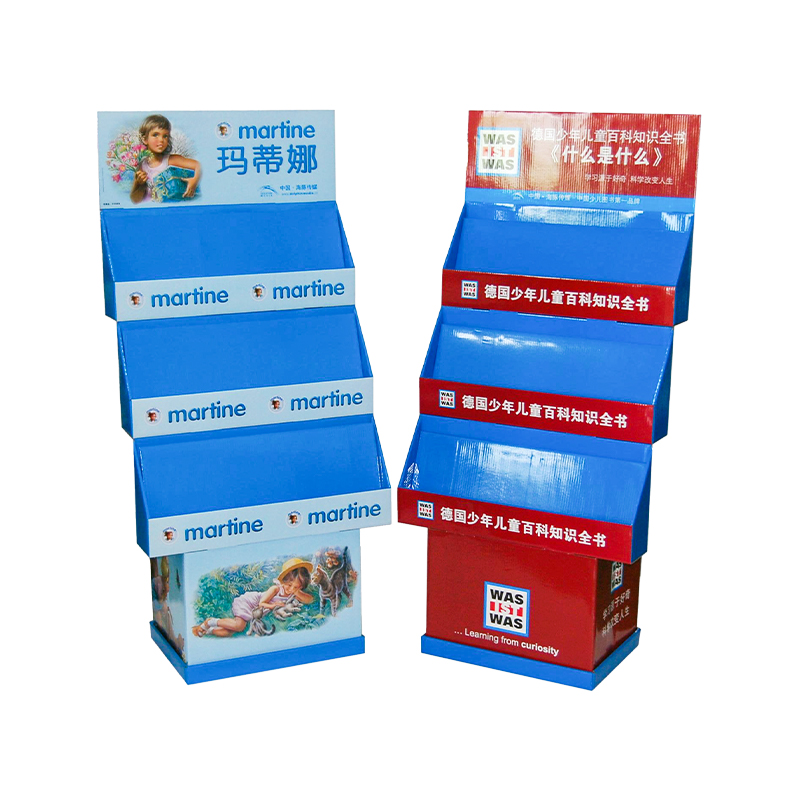-
 +86-0557-3781111 / +86-0571-56396277
+86-0557-3781111 / +86-0571-56396277
 +86-0557-3781111 / +86-0571-56396277
+86-0557-3781111 / +86-0571-56396277
Designing paper stationery display stands for easy assembly and disassembly is both an art and a science. It involves careful consideration of materials, structure, and user experience, all while ensuring the stand remains functional and durable. Here's how these elements come together to create a design that is not only practical but also sustainable.
The Material Advantage
The choice of material plays a crucial role. Most paper display stands are made from corrugated cardboard or other sturdy paperboards. These materials are lightweight, yet strong enough to hold a range of stationery items. The key is finding the right balance between thickness and flexibility. Thicker cardboard offers greater stability, but too much can make it hard to fold and unfold. The sweet spot lies in using medium-weight paperboard that retains strength while being easy to manipulate.
Smart Foldability: Harnessing the Power of Geometry
The engineering behind foldability is all about geometry. Designers use pre-scored lines and strategically placed creases to create sections of the stand that can fold flat when disassembled and pop open when needed. Think of it like origami, where complex structures can emerge from simple folds.
These folds are often based on accordion or zigzag patterns, which distribute the load evenly across the stand while allowing it to collapse with minimal effort. This design minimizes the need for screws, tools, or adhesives, making the assembly process intuitive and fast.
Interlocking Tabs and Slots: The Puzzle-Like Approach
Another crucial aspect of paper display stand design is the use of interlocking tabs and slots. These act like puzzle pieces that snap into place without requiring any external fasteners. The design of these tabs is precise—slots must be snug enough to hold pieces together securely but not so tight that it becomes difficult to pull them apart.
This method not only simplifies assembly but also reduces wear and tear since no forceful tools or screws are involved. The result is a stand that can be assembled by hand in a matter of minutes, and disassembled just as easily when needed for transport or storage.

Modular Design: Flexibility at Its Core
Incorporating modular elements into the design allows for customization and reconfiguration. Modular paper stands are made of interchangeable components that can be combined in different ways. This feature is not only convenient for assembly but also adds versatility. For instance, you can adjust the height, width, or number of shelves based on the display needs, all without the need for any additional parts or tools.
Sustainability: Reducing Waste, Increasing Usability
A key driver behind optimizing paper stands for easy assembly and disassembly is sustainability. By making the stand reusable and easy to take apart, manufacturers extend its lifespan. Additionally, paperboard stands are typically made from recyclable materials, and easy disassembly ensures they can be broken down and recycled with minimal effort. This eco-friendly approach appeals to businesses and consumers alike, who are increasingly prioritizing sustainability in product design.
The Future of Paper Display Stands
As technologies like laser cutting and computer-aided design continue to evolve, the precision of foldable, easy-to-assemble paper stands will only improve. Designers will be able to experiment with even more complex shapes and features, all while keeping assembly as simple as ever. We may soon see paper stands with added smart elements, like foldable LED displays, taking retail marketing to a new level.
Optimizing the design of paper stationery display stands for easy assembly and disassembly requires a combination of smart material choices, clever folding techniques, interlocking mechanisms, and modularity. By embracing these principles, designers create displays that are not only functional and efficient but also sustainable and user-friendly—paving the way for greener, more practical retail solutions.
Annhiu Address: Yishan Road and Qingshengou Road Intersection, Suzhou Economic Development Zone, Anhui, China
Tel: +86-0557-3781111
E-mail: [email protected]
Hangzhou Address: Building 3, No.286, Renliang Road, Renhe Street, Yuhang District, Hangzhou, Zhejiang, China
Tel: +86-0571-56396277
E-mail: [email protected]
Copyright © Hangzhou Shengpin Packaging Co., Ltd. All Rights Reserved.
